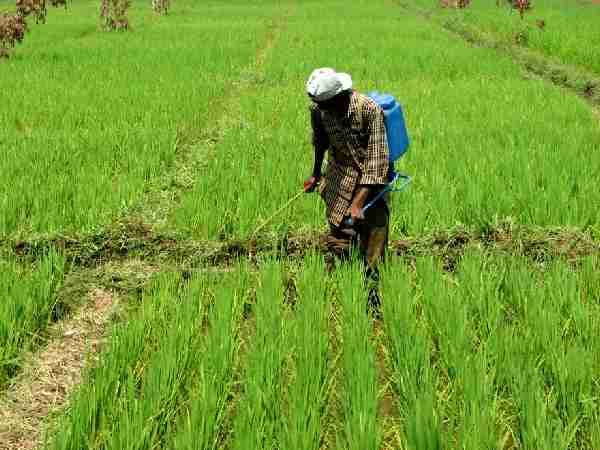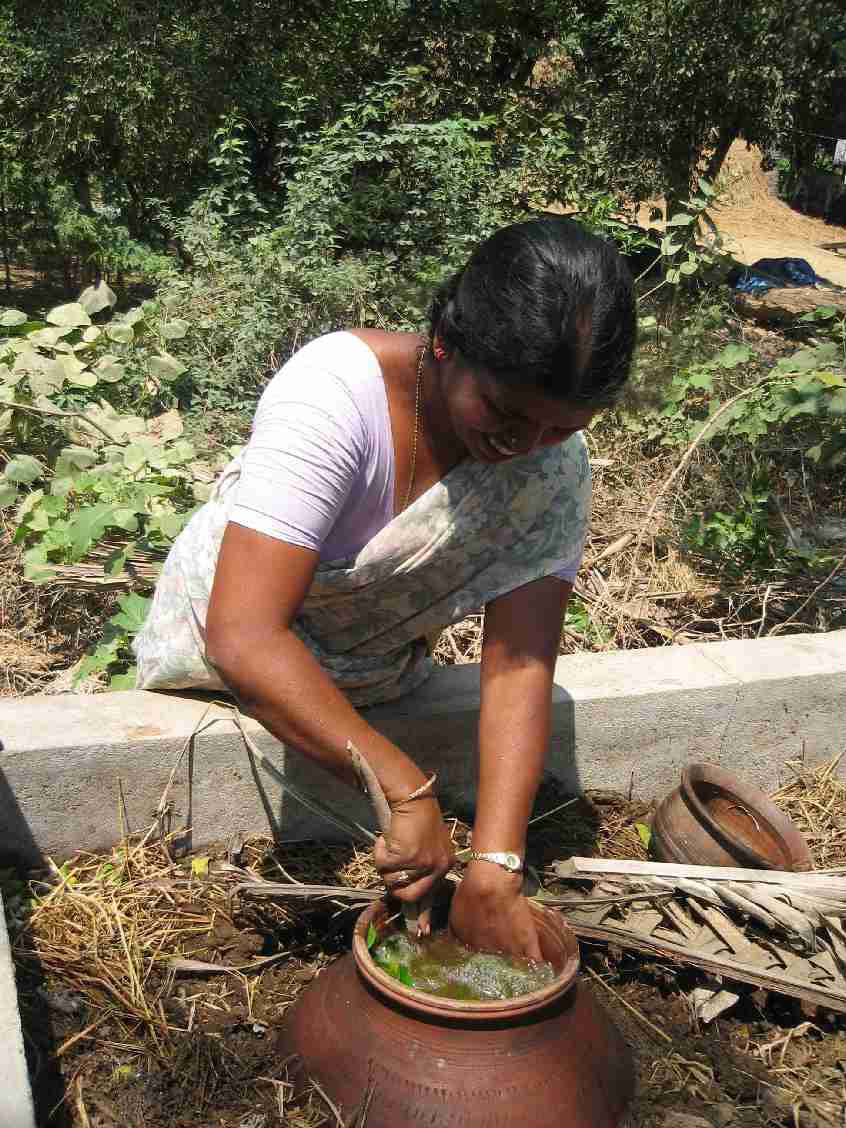 This set of presentations from the conference on Outstanding Organic Agriculture Techniques held during September 2009 at Bangalore deals with methods for promoting plant health through organic farming.
This set of presentations from the conference on Outstanding Organic Agriculture Techniques held during September 2009 at Bangalore deals with methods for promoting plant health through organic farming.
Healthy fields: Managing plant health
This presentation by S R Sundaraman of Tamil Nadu Farmers Technology Association, Erode on managing plant health begins with an account of the techniques that can be employed in TNRH 29 rice through organic SRI methods. The following are recommended in harvesting stage – (a) four irrigations with fruit gaudi (b) two applications of MEM (c) application of four sprays and (d) four applications of parasites. The growth promoters used are Archea solution, Concentrated Amudham Sol, Panchakavya, Butter Milk Sol, Fish/Egg Extract, Leaf Extract Solution-pest control and TFPE-MN Supplements. Apart from rice, the other crops dealt with are maize, kadali banana, turmeric, sugarcane and vegetables.
How to make soil Amrut Mitti (Fertile nursery soil)
This paper by Deepak Suchde describes how to produce living soil on our farms. This soil is needed in fields that have become degraded either from previous use of chemical fertilizers and pesticides or simply through neglect. The methods recommended in this paper are based on Prof. Dabholkar’s tried and tested scientific experiments in which he has shown that assured, calculated results can be obtained, if basic principles of preparing nutrient rich soil (Amrut Mitti), harvesting maximum sunlight and monitoring proper root growth are followed. He has termed this science ‘Natueco Farming.’
Studying this will help us prepare our own Amrut Mitti by using the resources available in our environment. This is a simple science which will bring prosperity to all. We are using nature’s bounty without destroying Mother Earth and in the process growing organic fruit, vegetable and grain, all wholesome and free from poisons. By doing so the farmer will become the caretaker of the earth in a real sense.
Life in the soil
This presentation by Sultan Ahmed Ismail of Ecoscience Research Foundation, Chennai deals with soil biota. After an account on the general proportion of components in a healthy soil, it details the soil organisms for purposes such as for nitrogen fixation. The importance of animals (and of biogas slurry) in agriculture which promotes soil life is highlighted. The adverse effect of tillage through tractors such as soil compaction which impacts soil growth is discussed. The impact of heavy chemical inputs and no mulch on soil and of burning of agro-waste on fields leading to destruction of microbes is presented.
Chennai deals with soil biota. After an account on the general proportion of components in a healthy soil, it details the soil organisms for purposes such as for nitrogen fixation. The importance of animals (and of biogas slurry) in agriculture which promotes soil life is highlighted. The adverse effect of tillage through tractors such as soil compaction which impacts soil growth is discussed. The impact of heavy chemical inputs and no mulch on soil and of burning of agro-waste on fields leading to destruction of microbes is presented.
Analysis of liquid manures and their use
This presentation by Dr N Deva Kumar, University of Agricultural Sciences, Bangalore is based on analytical studies of Beejamrutha, Jeevamrutha and Panchagavya. It begins with a discussion on preparation of these, their nutrient content in terms of N, P, K, pH, Mn and Cu, microbial studies of Beejamrutha and Jeevamrutha. The use of liquid manures in rice and fieldbean is dealt with. The presentation also deals with seedling treatment, application of Jeevamrutha, spraying of Panchagavya at different stages of crop growth, mulching at different crop growth stages. It also discusses the effect of organic farming and the Palekar method, Panchgavya method, seedling treatment of cultivation on yield of paddy including straw yield etc.
Panchgavya: A versatile potentiator for living beings
 This presentation by Dr K Natarajan, President, Rural Community Action Centre, Erode begins with an account of the variants of organic farming - organic agriculture, green culture, natural farming, do nothing farming, bio dynamic farming, permaculture etc. The need for panchgavya is discussed such as, in growth promoting hormones, impressive yield, immunity booster, free of diseases and to obtain high profit. The presentation then deals with modified panchagavya for plants, animals and human beings. The physico-chemical and biological properties of panchagavya as analysed at TNAU are discussed.
This presentation by Dr K Natarajan, President, Rural Community Action Centre, Erode begins with an account of the variants of organic farming - organic agriculture, green culture, natural farming, do nothing farming, bio dynamic farming, permaculture etc. The need for panchgavya is discussed such as, in growth promoting hormones, impressive yield, immunity booster, free of diseases and to obtain high profit. The presentation then deals with modified panchagavya for plants, animals and human beings. The physico-chemical and biological properties of panchagavya as analysed at TNAU are discussed.
Earthworms for organic farmers
This paper by Sultan Ahmed Ismail, discusses the positive effect of earthworms on the physical, chemical and biological parameters of the soils. The earthworm is a soil biotechnologist and a solid waste manager. Earthworms are known to consume large quantities of organic litter or waste and convert them into manure, which is used as valuable compost, known as ‘vermicompost’. The paper deals with some facts about earthworms, its life cycle, its classification into surface dwellers and sub-surface dwellers, the identification of worm-inhabited soils by observing earthworm castings on the soil surface. It also deals with vermicomposting as a scientific process of organised decomposition with the assistance of several soil organisms under proper conditions of moisture and aeration. This has been successfully implemented for domestic use, agricultural use, and in several other places in organic waste management. The paper concludes with a section on frequently asked questions about earthworms.
Role of Termites in Organic Farming
This presentation by Dr Pachegaonkar, Ex. Deputy Director of Department of Animal Husbandry, Latur, Maharashtra deals with the role of termites in agriculture. Termites are small antlike social soil animals of the order of Isoptera. The presentation attempts to dispel the notion that termites are notorious for their voracious appetite for Lignocelluloses i.e. timber, wood, cotton, jute and paper etc causing damages more than earthquake and fire. It highlights how termites are important in rehabilitations of degraded soil, survival of forest by recycling nutrients taken from soil by trees and plants.
Download all the 7 presentations:
/articles/promoting-plant-health-and-living-soil-organic-natural-sustainable-agriculture